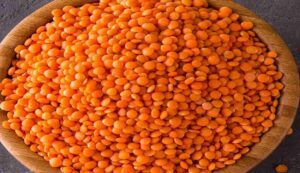Red Pulse Farming: Farmers will benefit a lot from the cultivation of this pulse, they will soon become rich
Red Pulse Farming: Indians consume a lot of pulses. India consumes more than half of the world’s pulse production. Pulses are also being grown in big quantities by farmers. There are a significant number of pulse crops that are also grown. Lentils are also providing several advantages to farmers. We’re going to teach you how to grow lentils today. This may generate millions of rupees in revenues. Let’s see how it goes in full.

How are lentils grown?
Red lentils are another name for lentils. Lentils are produced in large quantities in India. On the other side, India ranks second in terms of the highest output. It is beneficial to grow lentils on loamy soil. It may thus be grown on red soil in addition to this. For cultivation, soil with a pH between 5.5 and 7.5 is ideal.
A cold environment is ideal for growing lentils. However, a high temperature is needed for the plants to begin growing. The land has to be thoroughly plowed before farming. Then, when the field has been leveled and the soil is friable, plant the seeds. The plants should be maintained 30 cm apart while lentils are being sown.
After two months, the crop is ready
The lentils fully mature two months after the seeds are sown and are prepared to be harvested. October to December is when the lentil crop is seeded. However, February and March are when it is harvested. Harvesting lentils should occur after the grains on the plant are fully matured and the pods have turned from green to brown. One acre yields around twenty to twenty-five quintals. This may generate enormous revenues for farmers.

